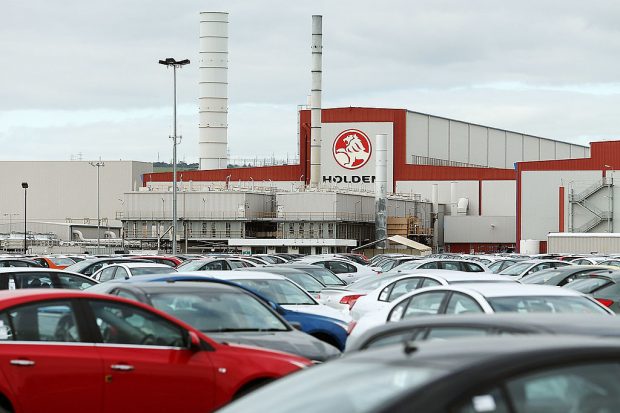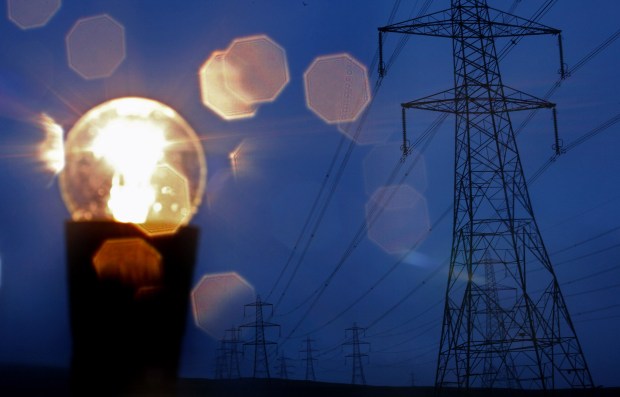 What’s gone wrong in South Australia? For much of the population, not very much, really. Most services are quite good, infrastructure development has kept pace with population growth, and while wage levels are lower than, say, Sydney, costs are also lower in many things including, notably, housing.
What’s gone wrong in South Australia? For much of the population, not very much, really. Most services are quite good, infrastructure development has kept pace with population growth, and while wage levels are lower than, say, Sydney, costs are also lower in many things including, notably, housing.
On the other hand, the economy is stagnant, unemployment is snaking upwards, corporate head offices have almost all moved out, except SANTOS, young well qualified people leave to be just about replaced by international migration, and innovation is limited. Existing large enterprises are complaining, shrinking and often closing.
State expenditure has expanded to take up the slack. But this has to be financed by borrowings, although not yet to really alarming levels, by a slightly higher taxation rate than other states, and by Commonwealth subventions. The GST distribution is, so far, favourable to SA. And the submarine and related contracts will be useful when they arrive.
But in the longer term no other large developments loom. And SA needs several.
This strategic situation has been created, broadly, by the process of globalisation. SA became, during the long Playford post-war era, more dependent on the industries created by protected industrialisation than any other state. Its population also became more concentrated in its industrialised capital than elsewhere. They also voted Labor.
Thirty or so years ago the Commonwealth Labor government decided to access the global economy and to liberalise that of Australia. I was a staffer and backbencher in that government. Good job, nicely done. That policy produced the last twenty-six years of growth for the country. But the consequences for the SA economy have been less unambiguously positive.
SA now faces the closure of its very large motorcar industry, difficulties for other manufacturing firms, the decline, even extinction of the steel making town of Whyalla, and some recent related closures in, for example, tyres and oil refining.
The picture is obviously not all gloom and new opportunities have opened and been taken in agriculture, particularly wine, fisheries, especially in Port Lincoln, and pockets of mining, notably copper/uranium in Roxby Downs. Education has also embraced more foreign students, most seeking permanent residence rather than instruction in critical theory.
Nonetheless, the state now has a public sector that is too large, an over large capital containing too many public servants, and a stagnant, even shrinking private economy with too few growth sectors.
This situation has been exacerbated by what can reasonably be seen as an over-enthusiastic pursuit of ‘renewables’ as a source for electricity. SA is state ‘leader’ in reliance on wind and solar power, both heavily taxpayer subsidised, resulting in very expensive electricity. The extent to which this policy has made the electricity supply also unreliable is still being debated.
On this economic structure the political struggle takes place. Labor has been in government since 2002 as a result of the deft footwork of Mike Rann in seizing victory from the Liberal government after the poll. Labor then won nicely in 2006, narrowly in 2010 and even more narrowly in 2014.
It could also be reasonably said that Labor has survived because of its superior political skills rather than good government itself. It has campaigned better, won with a minority of votes, and also struck better deals with both independents and former Liberals.
Mike Rann and Jay Weatherill have been competent, unloved but respected, good political fixers who have kept a fairly impressive Labor machine in office: to the victor the spoils.
But the model has now reached its limits. It might well have ended two elections ago if the SA Liberal Party looked for even a few weeks before any of the recent elections that it stood for something. Anything at all would have done, really. This has been the case broadly for fifty years.
The Liberals have won office on fair-ish boundaries only twice since 1970, when the fair boundaries more or less started, and only when Labor has stuffed up. First, was when Don Dunstan collapsed in 1979. The second was after the State Bank collapse, in 1993. The Liberals have lacked a serious, well organized supporter base in Adelaide and usually fail to sign a striker. It’s not always clear that even business supports them.
The last Liberal leader, promisingly, said, probably fairly, there were 20,000 too many public servants. She was criticised, retracted, sort of apologised, and was gone not long after. The present incumbent, her successor, Stephen Marshall, seemed likely, but mis-spoke and called for a vote for Labor (!) on the eve of the last election, which he then lost.
He has now declared his opposition to further nuclear industry expansion and to gas fracking in much of the state. Not much else has been memorable, and no critique has emerged of the state economy’s woes and how to fix them. He is actually firming up to the Green Left of Labor.
I see Alexander Downer is again today denying he will become active in politics on his return from London. That he is asked, and repeatedly, is a measure of the Liberals desperation.
Neither major party is maintaining its popular support in the face of their poor performances. Now, Labor also is rowing with BHP over electricity and the Liberals are arguing with SANTOS over gas.
Into this vacuum have lunged a few, what used to be called minor parties. Their support will no doubt be enhanced by the Trump/Brexit/EU generalised crisis of major parties in western democracies. A lot of people do watch the news.
In SA the main lesser contenders are Greens, X-team and One Nation. Family First might have done something, but the Bob Day implosion has likely scrubbed them.
The Greens have been big in SA for twenty years and got Hanson-Young up, just, in the Senate. They have some representation in the state upper house, but not much bite in the SA context: too few students, too many public servants, and not enough development to complain about.
In any case, part of the SA problem is that the ALP has tried to contain the Green vote by adopting much of the Green agenda. One result has been stalled development projects for decades.
Senator Xenophon is an SA phenomenon, and a very successful one at that. He has no policy logic really, and has been wholly unsuccessful in cutting gambling, his original purpose. But he milks the media, where he presents as commentator more than politician, the old Rudd trick, is personable, and where the majors are un-liked –as in Downer’s old seat – has picked up seats in both SA and Canberra. The X-team appeal is mostly metropolitan, but it is substantial there.
At present you’d have to bet on the X-team taking up the slack the two majors are about to leave.
A late entrant promises to be Pauline Hanson’s One Nation. In the past she has had admirers and picked up votes in SA last century. This was mostly in country areas, but also in declining working class city seats.
Her anti-globalisation rhetoric will now resonate among disaffected displaced manufacturing workers, but likely not produce mass voting in a crowded market. The anti-migrant stuff won’t work where there aren’t too many recent migrants. And the Aboriginal issue – how can I put that: reconciliation? – is working out better in SA than almost anywhere else, happily.
The problem with these prognoses is that they produce no identifiable coalition of political forces likely to or capable of generating an economic renaissance in SA. A full nuclear energy industry might achieve that, but Marshall has ruled it out, and so it’s unlikely Weatherill would take the electoral risk of pursuing it. The same seems to apply now to gas fracking.
The voting pattern is so fractured that is difficult to predict the nature of the next SA state government after the 2018 election. It will depend on new voting patterns, the new distribution of boundaries, the trading for preferences, the quality of campaigning, the post-election negotiations involving ratting, de-ratting and re-ratting, the seizing of spoils, nepotism, and other unknown unknowns. A new, purposeful regime is not a likely outcome.
At the moment it seems that SA has tried the conventional economic growth model and has failed to deliver on it. It might now have to try to live with a more static model. This might be one in which economic and population growth occurs, but quite slowly. No great harm in that.
For many decades South Australia thought it might be a smaller version of Victoria. More realistically, it could now become the mainland version of Tasmania.
Bob Catley, who was a professor and federal Labor MP, now sails quite a lot.
Got something to add? Join the discussion and comment below.
Get 10 issues for just $10
Subscribe to The Spectator Australia today for the next 10 magazine issues, plus full online access, for just $10.























Comments
Don't miss out
Join the conversation with other Spectator Australia readers. Subscribe to leave a comment.
SUBSCRIBEAlready a subscriber? Log in